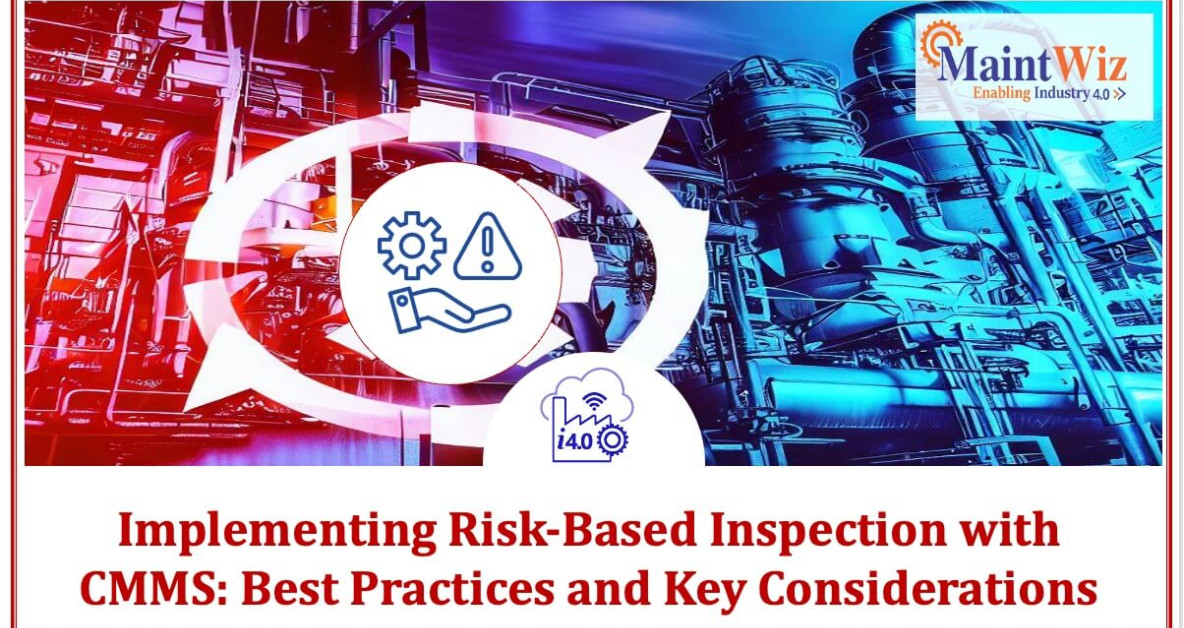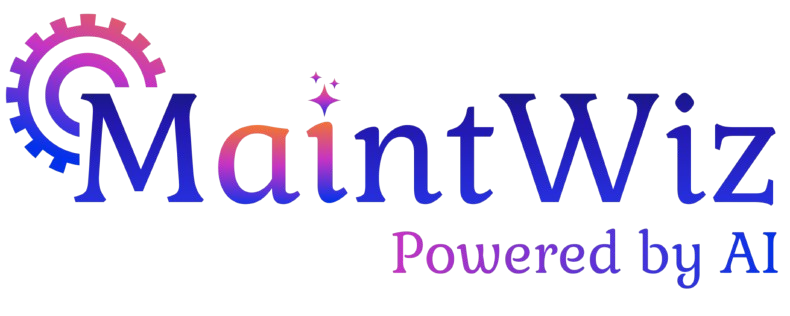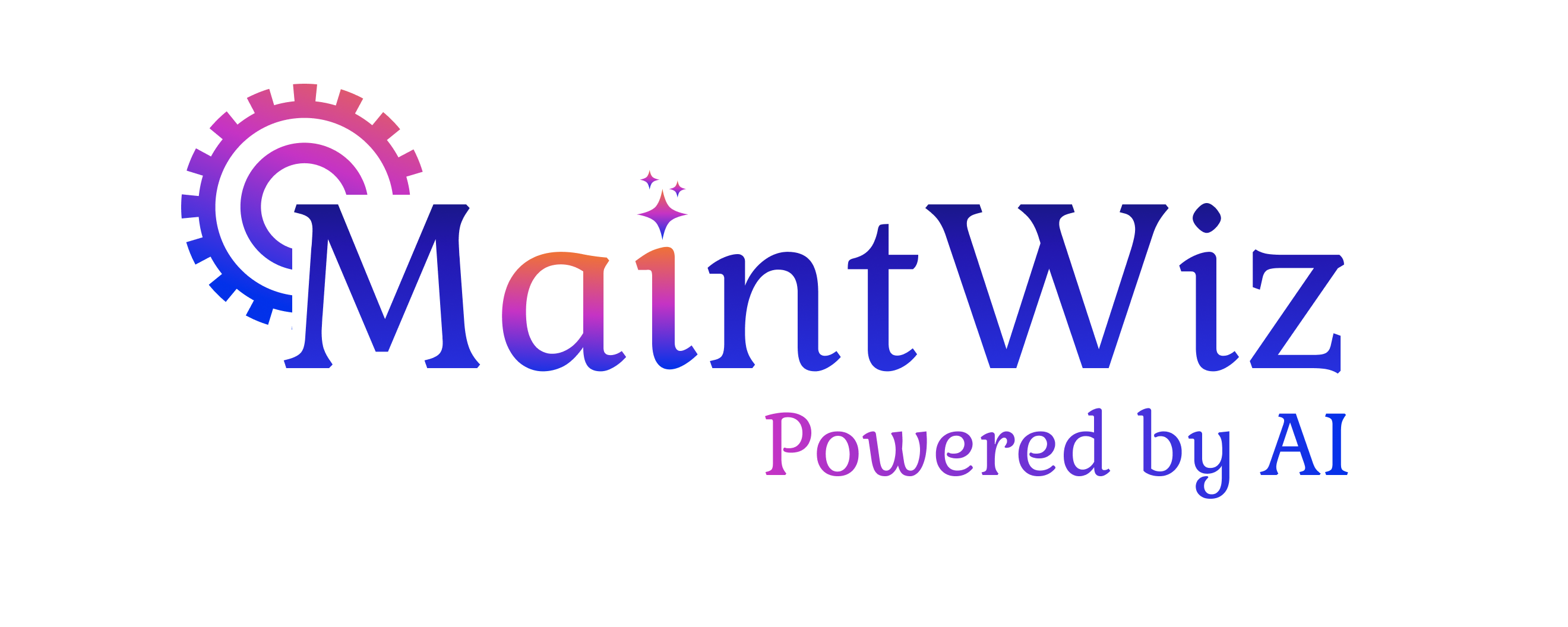
Table of Contents
1. Introduction to Risk-Based Inspection (RBI)
Risk-Based Inspection (RBI) is a crucial methodology in asset management that prioritizes inspection efforts based on the risks associated with equipment and components. By implementing RBI with CMMS, organizations can optimize their maintenance strategies and improve overall operational efficiency.
What is Risk-Based Inspection?
Risk-Based Inspection is an approach that focuses on identifying and managing the risks associated with equipment failure. It involves assessing the criticality and probability of failure for each asset and prioritizing inspections accordingly.
Importance of RBI in Asset Management
Implementing RBI is essential for effective asset management as it allows organizations to allocate inspection resources efficiently. By focusing on high-risk assets, organizations can mitigate potential failures, minimize downtime, and ensure safety and regulatory compliance.
Benefits of Implementing RBI with CMMS
Utilizing a Computerized Maintenance Management System (CMMS) for RBI offers numerous advantages, including:
- Improved maintenance planning and resource allocation
- Enhanced risk assessment and data-driven decision-making
- Optimized inspection frequencies and intervals
- Streamlined documentation and reporting processes
- Better regulatory compliance and audit readiness
2. Understanding CMMS in the Context of RBI
CMMS, also known as a Computerized Maintenance Management System, is a software solution that helps organizations manage their maintenance activities effectively. When integrated with RBI methodologies, CMMS becomes a powerful tool for implementing risk-based inspection strategies.
Overview of CMMS (Computerized Maintenance Management System)
CMMS is designed to streamline maintenance operations by centralizing data, automating workflows, and facilitating communication among maintenance teams. It serves as a repository for asset information, work orders, maintenance history, and more.
Role of CMMS in Facilitating RBI
CMMS plays a vital role in RBI implementation by providing the necessary functionalities to support risk assessment, inspection planning, data management, and reporting. It enables organizations to integrate RBI methodologies seamlessly into their maintenance processes.
Integration of RBI Methodologies within CMMS
Organizations can configure their CMMS to incorporate RBI methodologies and criteria specific to their assets and industry. This integration allows for risk calculations, prioritization of inspections, and the generation of RBI reports within the CMMS environment.
3. Key Considerations for Implementing RBI with CMMS
Before implementing RBI with CMMS, organizations should take several key considerations into account to ensure a successful andeffective implementation.
Assessing Asset Criticality and Risk Levels
A thorough assessment of asset criticality and risk levels is essential for prioritizing inspection efforts. Organizations should evaluate the potential consequences of asset failures, their impact on safety, production, and compliance, and assign appropriate risk levels.
Defining RBI Strategies and Inspection Intervals
Organizations must establish clear RBI strategies and inspection intervals based on the identified risks. This involves determining the appropriate inspection methods, frequencies, and techniques to effectively manage the risks associated with each asset.
Establishing RBI Data Requirements and Documentation
Defining the data requirements and documentation processes for RBI is crucial for capturing and analyzing relevant information. Organizations should establish guidelines for data collection, storage, and analysis to ensure accurate risk assessments and facilitate reporting.
4. Best Practices for Setting Up RBI in CMMS
Implementing RBI within CMMS requires following best practices to optimize the process and achieve the desired outcomes.
Developing a Comprehensive Asset Register
Building a comprehensive asset register within the CMMS is essential for effective RBI. It involves capturing all relevant asset information, including criticality ratings, maintenance history, inspection records, and associated documentation.
Configuring Risk Assessment Criteria in CMMS
Customizing risk assessment criteria in the CMMS allows organizations to align the RBI process with their specific risk matrix and assessment methodology. This configuration ensures accurate risk calculations and enables prioritization of inspection activities.
Defining Inspection Plans and Frequencies
Establishing inspection plans and frequencies in CMMS helps organizations schedule and track their RBI activities effectively. By defining the required inspections for each asset and setting appropriate frequencies, organizations can ensure timely inspections and maintenance actions.
5. Data Management and Analysis for RBI in CMMS
Proper data management and analysis are critical for successful RBI implementation within CMMS. Organizations should focus on collecting, inputting, and analyzing data to derive valuable insights and support decision-making.
Collecting and Inputting Data into CMMS
Organizations should establish standardized procedures for collecting and inputting data into the CMMS. This includes asset information, inspection results, maintenance history, and any other relevant data that contributes to accurate risk assessments.
Performing Risk Calculations and Prioritization
Utilizing the risk assessment criteria configured in CMMS, organizations can perform risk calculations and prioritize assets based on their risk levels. This step helps determine the order and frequency of inspections to focus resources on high-risk assets.
Generating RBI Reports and Notifications
CMMS enables the generation of RBI reports and notifications to facilitate decision-making and action. These reports provide insights into asset risk profiles, recommended actions, and upcoming inspections, ensuring timely maintenance planning and execution.
6. Integrating RBI with Maintenance Strategies in CMMS
Integrating RBI findings and recommendations with maintenance strategies in CMMS is crucial for driving proactive and effective maintenance actions.Aligning RBI Findings with Maintenance Planning
Organizations should align RBI findings with maintenance planning in CMMS. This involves integrating RBI recommendations into preventive maintenance schedules, work orders, and maintenance tasks to ensure timely execution and address identified risks.
Incorporating RBI Recommendations into Work Orders
CMMS allows organizations to incorporate RBI recommendations into work orders, providing clear instructions to technicians on necessary inspections, tests, or maintenance tasks. This integration ensures that RBI findings are actioned appropriately and tracked within the CMMS.
Tracking RBI-Related Maintenance Activities in CMMS
Organizations should use CMMS to track and monitor RBI-related maintenance activities. By capturing and recording all relevant data within the system, organizations can ensure the execution of required maintenance tasks and maintain an audit trail of activities performed.
7. Training and Skill Development for RBI Implementation
Training and skill development are essential for successful RBI implementation within CMMS, ensuring that personnel involved are equipped with the necessary knowledge and competencies.
Providing Training on RBI Concepts and Methodologies
Organizations should provide training programs on RBI concepts and methodologies to relevant personnel. This training helps individuals understand the principles behind RBI, the use of risk matrices, and the interpretation of RBI results.
Ensuring CMMS Proficiency for RBI Practitioners
It is crucial to ensure that the personnel responsible for implementing RBI within CMMS are proficient in using the system. Training on CMMS functionalities and data management processes will enable them to effectively utilize the system for RBI activities.
Promoting a Culture of Risk Awareness and Accountability
Organizations should foster a culture of risk awareness and accountability across their maintenance teams. This involves promoting the understanding of asset risks, encouraging reporting of potential issues, and emphasizing the importance of RBI in maintaining safe and reliable operations.
8. Continuous Improvement and Optimization of RBI in CMMS
Continuous improvement and optimization are essential for maximizing the benefits of RBI within CMMS and enhancing maintenance practices over time.
Monitoring and Evaluating RBI Performance Metrics
Organizations should establish key performance metrics to monitor the effectiveness of their RBI implementation in CMMS. These metrics may include inspection completion rates, risk reduction achievements, and maintenance cost savings attributed to RBI practices.
Analyzing Data to Identify Improvement Opportunities
By analyzing the data collected within CMMS, organizations can identify improvement opportunities in their RBI processes. This analysis can help identify recurring issues, refine risk assessment criteria, and enhance maintenance strategies to continuously optimize RBI outcomes.
Incorporating Lessons Learned for Future RBI Iterations
Organizations should capture and incorporate lessons learned from previous RBI iterations into future implementations. This ensures that knowledge and best practices are shared, and any identified gaps or shortcomings are addressed to improve the effectiveness of RBI in CMMS.
9. Regulatory Compliance and RBI Implementation
Regulatory compliance is a critical aspect of RBI implementation within CMMS. Organizations must adhere to relevant industry standards and guidelines to ensure the safety, reliability, and compliance of their assets and operations.
Understanding Regulatory Requirements for RBI
Organizations should have a clear understanding of the regulatory requirements related to RBI in their industry. This includes compliance with safety regulations, inspection standards, reporting obligations, and any specific guidelines related to risk-based approaches.
Ensuring Adherence to Industry Standards and Guidelines
Compliance with industry standards and guidelines is essential for effective RBI implementation. Organizations should align their RBI practices with recognized standards, such as API 580/581, ASME PCC-3, or other applicable codes, to ensure consistency and reliability in their risk assessments.
Documenting RBI Processes for Audit and Compliance Purposes
Documentation of RBI processes is crucial for audit and compliance purposes. Organizations should maintain records of risk assessments, inspection plans, RBI reports, and any other relevant documentation to demonstrate adherence to regulatory requirements and facilitate audits.
10. Future Trends and Innovations in RBI and CMMS
The field of RBI and CMMS is continually evolving, with emerging trends and innovations shaping the future of asset management practices.
Advancements in Risk Assessment Methodologies
Ongoing advancements in risk assessment methodologies are enabling more accurate and comprehensive risk evaluations. Techniques such as probabilistic risk assessment (PRA) and advanced data analytics are being integrated into CMMS to enhance the RBI process.
Integration of Artificial Intelligence and Machine Learning
The integration of artificial intelligence (AI) and machine learning (ML) technologies is revolutionizing asset management and RBI. AI and ML algorithms can analyze large volumes of data, identify patterns, and provide predictive insights for more effective risk management.
Utilizing IoT and Data Analytics for Enhanced RBI Outcomes
The Internet of Things (IoT) and data analytics offer new opportunities for improving RBI outcomes. Connected sensors and devices can provide real-time asset data, while advanced analytics can uncover hidden insights to optimize inspection strategies and reduce risks.
Conclusion
In conclusion, implementing risk-based inspection (RBI) with CMMS is crucial for optimizing asset management practices and ensuring safety, compliance, and efficiency. By following best practices and considering key considerations, organizations can leverage CMMS to integrate RBI methodologies effectively. Continuous improvement, training, and adherence to regulatory requirements are essential for long-term success. To unlock the benefits of implementing RBI with CMMS for your organization, contact our experts today!
Key Takeaways:
- Risk-Based Inspection (RBI) is crucial for prioritizing inspection efforts based on asset risks.
- CMMS plays a vital role in facilitating RBI implementation and integration.
- Key considerations include assessing asset criticality, defining RBI strategies, and establishing data requirements.
- Best practices involve developing a comprehensive asset register, configuring risk assessment criteria, and defining inspection plans.
- Data management and analysis in CMMS enable accurate risk calculations and generation of RBI reports.
- Integrating RBI with maintenance strategies ensures proactive maintenance planning and execution.
- Training and skill development are crucial for successful RBI implementation.
- Continuous improvement and optimization involve monitoring performance metrics and incorporating lessons learned.
- Regulatory compliance is essential, and documentation is necessary for audits.
- Future trends include advancements in risk assessment methodologies, AI and ML integration, and IoT utilization.

Jai Balachandran is an industry expert with a proven track record in driving digital transformation and Industry 4.0 technologies. With a rich background in asset management, plant maintenance, connected systems, TPM and reliability initiatives, he brings unparalleled insight and delivery excellence to Plant Operations.
Recent Posts
- From Chaos to Order: Simplifying Maintenance Management with Technology
- From Crisis to Control:Regaining Stability with Effective Breakdown Response
- Avoiding Pitfalls: The 7 Biggest Mistakes Plant Managers Make in Maintenance
- Quality Matters: Improve OEE by Reducing Defects and Rework with MaintWiz CMMS
- How to Implement an Effective Lubrication Program for Your Plant Maintenance Strategy
Recent Comments
Company




